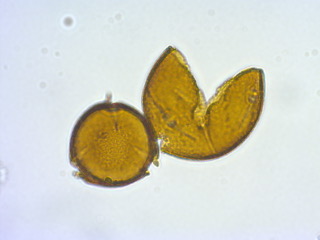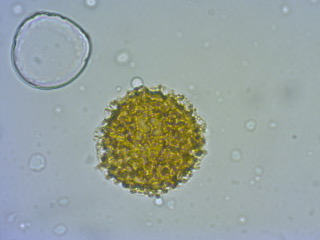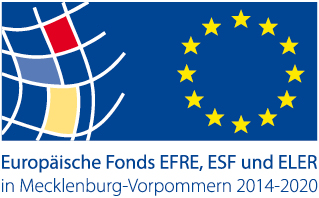Pollen is a powdery substance of pollen grains, produced by plants, that is meant to transfer male genetic information from to plant to plant. To this end, pollen is transported by wind or by insects, bats and birds. Some of the pollen grains land on lakes and mires, where they will be preserved in peat or lake sediments. Palynology uses pollen preserved in peat and lake sediments to reconstruct the vegetation of the past. Those natural archive hence allow long-term observations of the vegetation, which is useful for example to study the response of plants to climate change in the past. Palynology is a valuable tool to validate and improve climate models since climate is influenced by vegetation, e.g. through parameters such as albedo and evapotranspiration. In archaeological studies, palynology can reveal the environment in which earlier cultures lived and how they have modified past environments. Last but not least, for nature conservation palynology provides baselines, e.g. on the natural composition and openness of native forests.
Thanks to new methods such as REVEALS, ROPES, Marco Polo and EDA, palynology has recently changed from a descriptive to a quantitative science. While the interpretation of pollen data is currently making great progress, the collection of pollen data has hardly changed in the 100-year history of palynology. Until today, pollen data are collected manually by counting samples under a light microscope. The procedure is time-consuming and therefore expensive. Databases such as the European Pollen Database and Neotoma provide access to older data sets, yet these are often only limited suitable for modern analyses due to insufficient dating and temporal resolution. A widespread application of the new, quantitative methods has hence failed so far due to a lack of suitable pollen data. The first attempts of automate pollen analysis started 30 years ago. Early approaches tried to identify pollen on microscopic images by means of defined features. The current approaches instead apply machine-learning. In tests, the number of recognizable pollen types increased from < 10 to currently ~30. The first commercially available system can recognise pollen grains of different eucalyptus species, which are hardly distinguishable by humans.
Although the foundations of automated pollen recognition have been laid, applications in palaeoecology are still missing. The central problem is that real pollen samples from lake sediments and peat predominantly contain unidentifiable objects - pollen grains must first be found among these objects. In addition, sub-fossil pollen grains are often degraded and have partly lost their characteristics. Therefore, a practical automated detection system is to be developed in three, increasingly demanding steps:
- recognition and counting of pollen in pure samples without other residues contamination
- fast and reliable differentiation between pollen and other residues in real samples
- identification of as many pollen types as possible in fossil material
The main focus of the development is on a system that is well applicable in fossil pollen samples.




